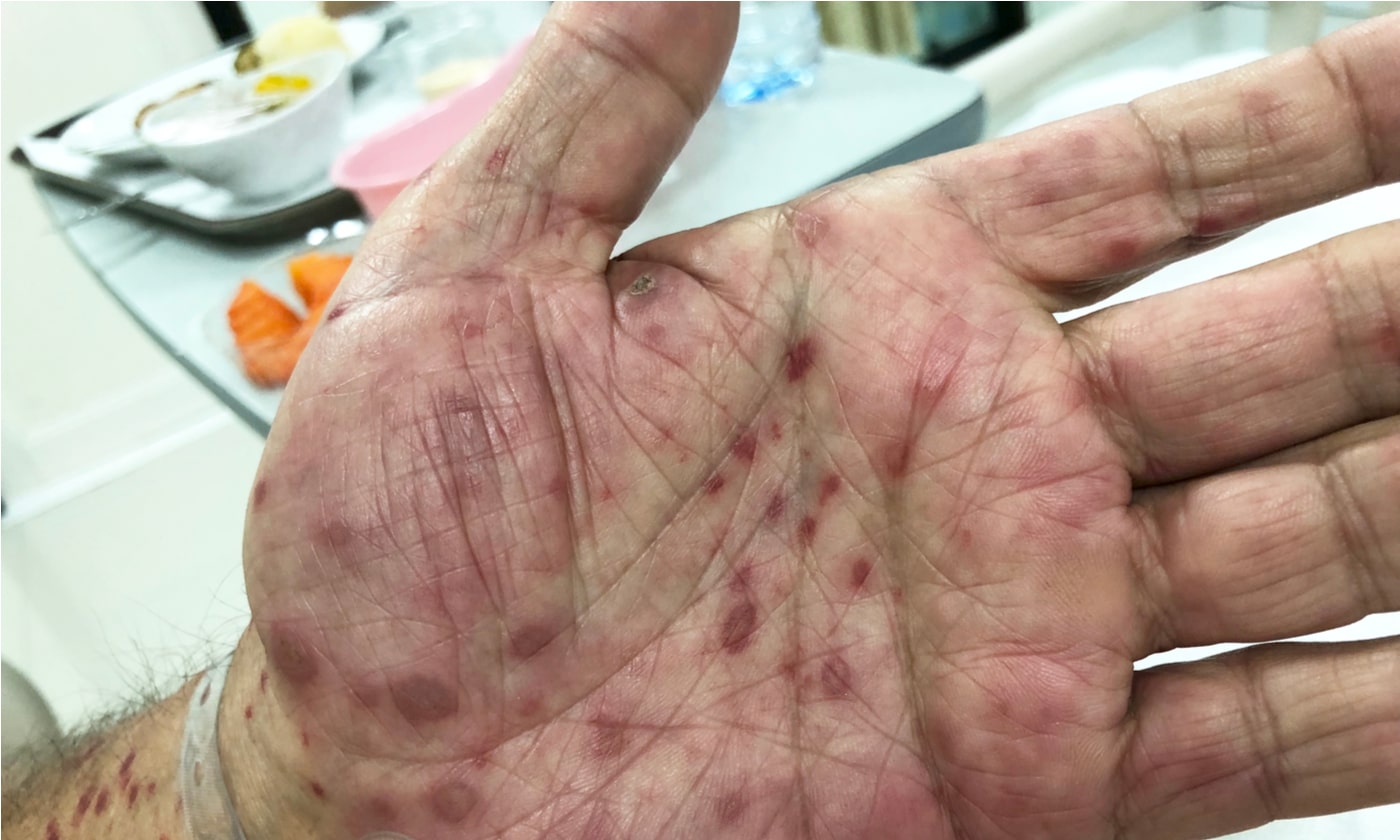Syphilis is a sexually transmitted disease caused by the bacterium Treponema pallidum subspecies pallidum. It has been called “The Great Pretender”, as symptoms can resemble other diseases. If syphilis is untreated, it can cause serious health complications. There are distinct stages of a syphilis infection, known as primary, secondary, latent, and tertiary.
What symptoms can occur in secondary syphilis?
- Skin rashes of varying appearance (usually the first sign of secondary infection)
- Sores in the mouth, vagina, or anus
- Large, raised, gray, or white lesions in warm, moist areas (e.g., mouth, armpits, groin)
- Fever
- Swollen lymph glands
- Sore throat
- Patchy hair loss
- Headaches
- Weight loss
- Muscle aches
- Fatigue
Not everyone who has secondary syphilis will develop all of these symptoms, but skin rashes usually occur, although sometimes they may be so faint that they are unnoticed. The symptoms of secondary syphilis eventually disappear whether or not treatment is received. Untreated cases will progress to the tertiary stage, and possibly the potentially fatal tertiary stage. Treatment cures syphilis and prevents the progression of the disease (1).
How long does syphilis take to progress to the secondary stage?
On average, it takes 21 days after exposure before an infected individual shows the first symptom of syphilis, which is one or more chancres (in the primary stage). However, some people may notice a chancre just 10 days after they become infected, while it can take up to 90 days for other people. The chancres of a primary infection typically last 3–6 weeks before they disappear (whether or not treatment is received) (1).
Some people develop symptoms of a secondary infection while the primary chancre is healing (1), but more typically the secondary stage doesn’t begin until 2–8 weeks after the chancre has disappeared (2).
How can I prevent secondary syphilis?
A single dose of Benzathine penicillin G 2.4 administered intramuscularly is effective to treat and cure anyone with a primary infection to prevent it from progressing to the secondary stage. This treatment is also effective in the secondary and early latent stages, but three doses are required for the late latent stage (1).
The correct use of latex condoms does reduce the risk of syphilis, but only when the infected area (e.g., chancre) or site of potential exposure is covered (1).
How can I get tested for syphilis?
Lab testing from a simple, self-collected finger-prick blood sample can accurately diagnose a syphilis infection. There are two types of lab tests–nontreponemal and treponemal, which are both required for an accurate diagnosis. We offer a treponemal assay, which detects antibodies specific to syphilis, but these antibodies usually remain detectable for life even after successful treatment; hence this assay identifies both current and past (resolved) infections (3).
References:
1. Syphilis – CDC Fact Sheet (Detailed). (2017, January).
2. Tudor ME, et al. (Updated October 2021). Syphilis. StatPearls [Internet].
3. Henao-Martinez AF & Johnson SC. (2014). Diagnostic tests for syphilis. Neurol Clin Pract. 4 (2), 114-122.



